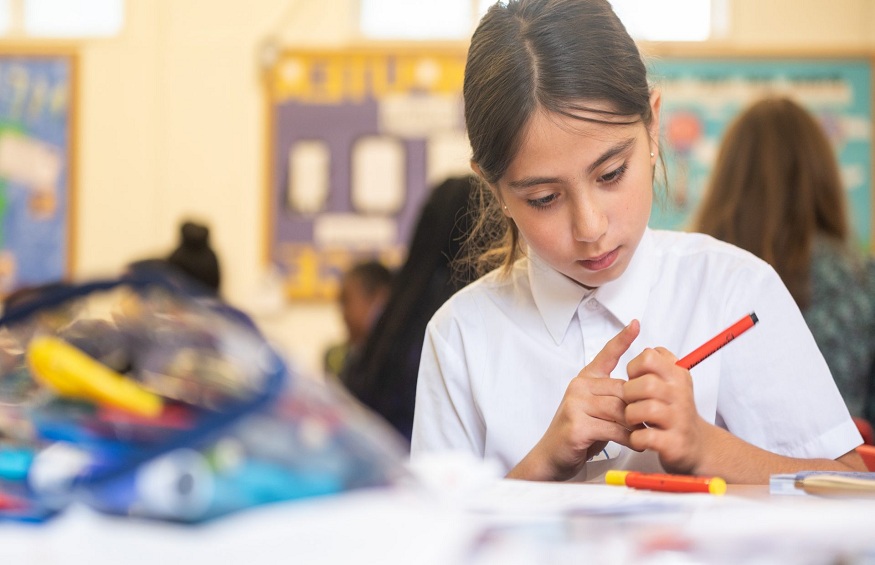You spend thousands of hours there as a student; one is seated there, placed, in a line and a row. The classroom, this parallelepiped more or less 10 meters by 6 meters, is a familiar place for all of us.
The classroom is where teachers teach and, when things go well, where students learn. It also goes hand in hand with teaching (and a teacher), a group of students and dedicated time. Moreover, we use the same word to designate them. In schools, we “teach” to “a class” in a “classroom” during “class time”; we can speak of a “class-system” because all these elements are closely associated.
Classrooms and schools as a whole are designed and thought out for so-called “simultaneous” pedagogy , which consists of bringing together pupils of the same age in a group considered to be homogeneous in order to transmit to everyone the same data, information, knowledge and knowledge. Until the end of the 1960s, there was often a platform there, which marked the teaching authority and was to facilitate the dissemination of the word, as well as the supervision of children or adolescents. Today, this kind of platform has disappeared. But the space remains oriented towards the painting, the “stage”.
This model of simultaneous transmission was imposed during the 19th century to the detriment of the method of mutual teaching for which ages and levels were mixed, and where the most advanced pupils supported the master .
New world, new skills
The simultaneous method, at the heart of “the school form” , made it possible to pass from an education reserved for a few to a mass education. But the world has changed, expectations have been overturned and new skills have to be acquired “beyond traditional academic content”, as UNESCO writes, which, with other institutions, has brought together experts to define the skills of the 21st century .
Creativity, critical thinking, cooperation and communication are among these main skills. They have in common to be acquired in action, and not through a lecture. Thus, cooperation is learned through group work, by confronting others, by negotiating.
There is another major upheaval. For a long time, knowledge was identified with its holders. They could only be accessed through them, as Michel Serres reminded us in Petite Poucette . Then, with the development of writing, it was more widely distributed while remaining localized in a few “places” such as the library or the teaching floor. Today everything exploded. Knowledge is everywhere and especially in this smartphone that everyone holds in their pocket or at the bottom of their bag.
Data, information, knowledge and skills are untied from the person who traditionally was supposed to transmit them. In the digital world, it is accessible to everyone, we can have it when we want, how we want, where we want. The classroom no longer contains them and teachers are no longer their exclusive owners.
However, the classroom system is the basis of current school architecture and remains the horizon of most projects, as can be seen for example in the “Building the school of tomorrow” program of the Ministry of Education. French national campaign aimed at rethinking school spaces. There are multiple courses of action to open the establishments to their immediate environment or more ecological constructions. But when it comes to concretely considering the spatial organization of establishments , the old model, structured around classrooms, reappears.
Reinventing school geography
Why does this 19th century model continue to organize the school of the 21st century ? We can first invoke intellectual laziness, the tropism of reproduction, reluctance… We have only known this model and we do not know that it has not always been so, that there was a time where learning was often combined in the singular and was done almost everywhere, in the fields or the forge, by rubbing shoulders with others, with those who knew. It has not always been so and it could be otherwise. But the age of the school form associated with the organization by class seems obvious. For students, parents and teachers, school is the school form.
We must also take into account the complexity of the school machinery. The entire structure is based on the coherence of the four elements (a space, a moment, a group and a school discipline), which are difficult to separate. To touch one is to jostle the others. All head teachers know this. Limiting, or even abandoning the spatial organization in classrooms, also means affecting school time, disciplinary divisions and groups made up of pupils. Difficult in these conditions to advance by small touches. Going beyond the class model is literally revolutionary.
The conception of the teaching profession is another sticking point. What defines a teacher – especially in secondary education – is first and foremost the mastery of academic knowledge. Accepting that the knowledge traditionally disseminated through one’s voice is available everywhere and all the time is not easy. Inventing a new geography for schools also means questioning teacher identity in order to invent a new profession closer to support than transmission.
Finally, the school form is based on a logic of domination. Paolo Freire , Ivan Illich , Michel Foucault or Jacques Rancière have denounced it for a long time. It allows control and monitoring. In a school, the quadruple class system makes it possible to know who (both pupils and teachers) is where, to do what and at each moment of the school day. Starting from learning and from each individual, multiplying paths and choices is part of an emancipating process that everyone probably does not want.

